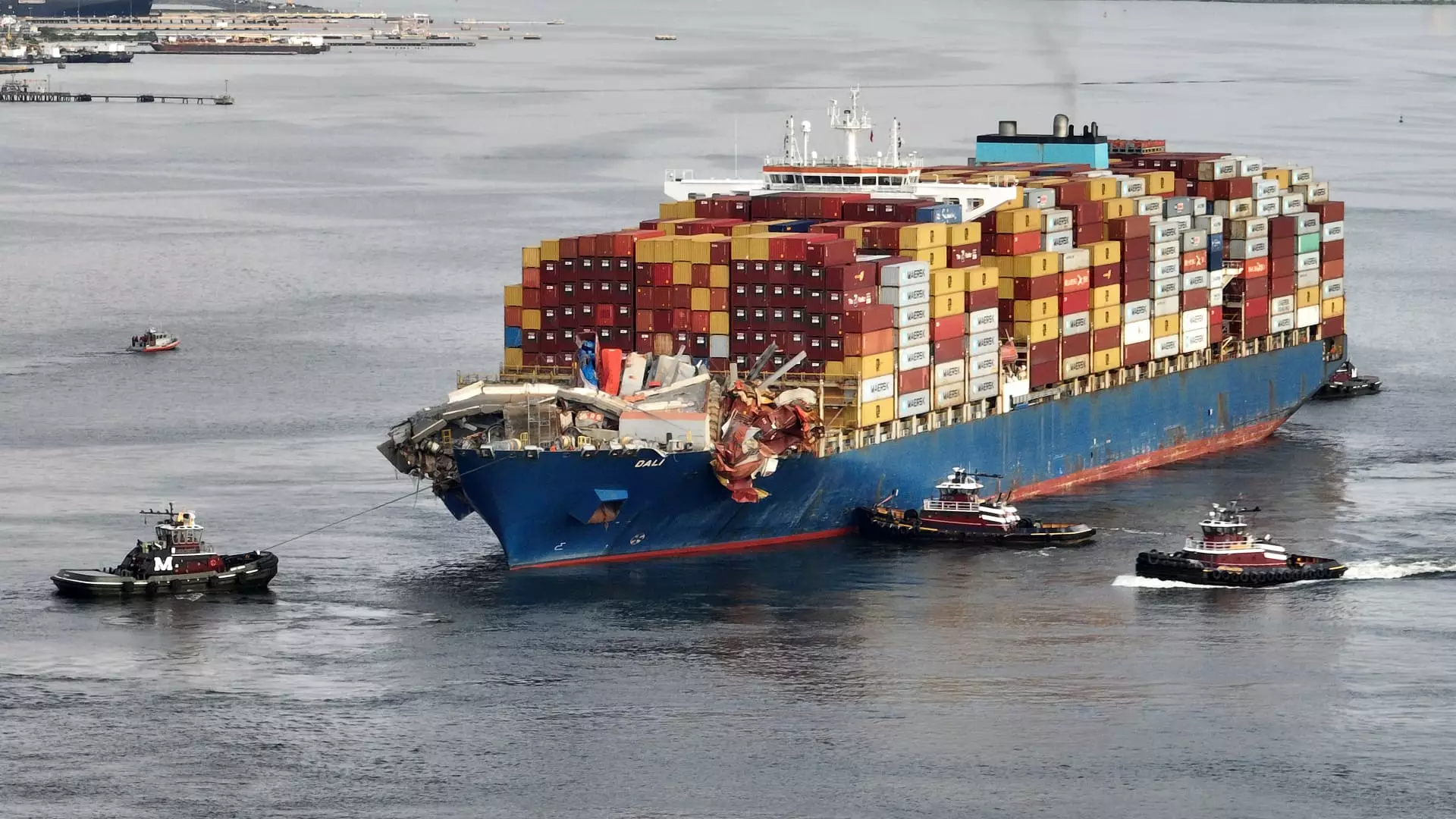On a fateful day in March, the Dali, an enormous container ship, collided with and caused the collapse of Baltimore’s Francis Scott Key Bridge. This incident led to a catastrophic failure of the structure, resulting in the deaths of six construction workers and disrupting shipping operations along the East Coast. The ship had remained in the Patapsco River for the past eight weeks, causing significant complications and concerns.
The Unified Command, consisting of various local and federal agencies overseeing the operation, initiated a carefully planned process to remove the ship from the site. The ship became buoyant at around 6:40 a.m. ET and was subsequently moved by tugboats to a local port at 7 a.m. The engineers conducted thorough examinations, released anchors and mooring lines, and de-ballasted the ship by removing a significant amount of water that had been pumped onto it.
The removal process was not without its challenges and complexities. The Dali, which measures almost 1,000 feet in length, lost power twice within three minutes before the crash occurred. Despite the crash, the 22 crew members on board were unharmed, but they were required to remain on the ship throughout the entire ordeal. This posed logistical challenges and safety concerns for both the crew and those involved in the removal operation.
The crew members of the Dali expressed fears of personal criminal liability and emotional distress following the crash. Government officials, investigators, and union staff visited the mariners to address their concerns and provide support. The Singapore Maritime Officers’ Union released a statement detailing the crew’s apprehensions and the need for assistance during this challenging time.
The FBI launched a criminal investigation into the crash, highlighting the potential legal ramifications of the incident. U.S. regulations mandate that a ship must have a minimum staff on board at all times, further complicating the situation. The criminal investigation adds another layer of complexity to an already intricate and high-stakes operation.
Baltimore, as a top 20 U.S. port, plays a crucial role in national supply chains. The disruption caused by the collision of the Dali with the Francis Scott Key Bridge reverberated across the East Coast, affecting shipping operations and causing delays in the transportation of goods. The economic impact of this disruption underscores the importance of a swift and successful removal operation.
The removal of the Dali from the Patapsco River represents a significant undertaking that involves multiple agencies, complex procedures, and various challenges. The humanitarian, legal, and economic implications of the collision underscore the necessity of a coordinated and efficient operation to ensure the safety of the crew, address legal concerns, and minimize the disruption to supply chains. The successful completion of this removal process will require careful planning, collaboration, and meticulous execution from all parties involved.

Leave a Reply